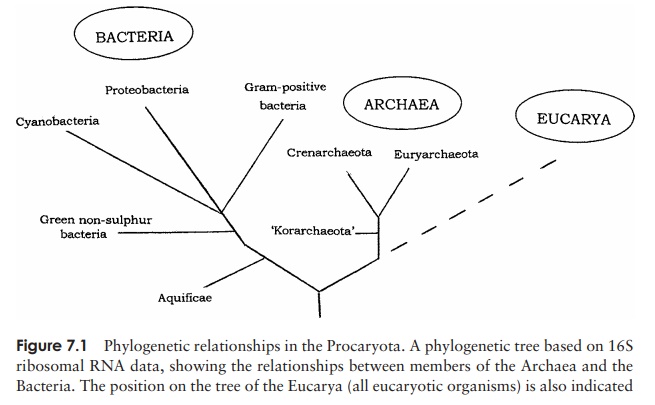Chapter: Essential Microbiology: Procaryote Diversity
Procaryote Diversity
Procaryote
Diversity
Ever since bacteria were first identified,
microbiologists have attempted to bring order to the way they are named and
classified. The range of morphological features useful in the differentiation
of bacteria is fairly limited (compared, say, to animals and plants), so other
characteristics have also been employed. These include metabolic properties,
pathogenicity, nutritional requirements,
staining reactions and antigenic properties. The first edition of BergeyŌĆÖs Manual of Systematic Bacteriology
(henceforth referred to as ŌĆśBergeyŌĆÖ),
published in the mid-1980s, mainly used phenotypic characteristics such as
these to classify bacteria. The result placed bacteria into taxonomic
groupsthat may or may not reflect their evolutionary relationship to one
another. In the years since the first edition of Bergey, the remarkable advances made in molecular genetics have led
to a radical reappraisal of the classification of bacteria. Comparison of
nucleic acid sequences, notably those of 16S riboso-mal RNA genes, has led to
a new, phylogenetically based scheme of classification, that is, one based on
how closely different groups of bacteria are thought to be related, rather than
what morphological orphysiological features they may share. Ribosomal RNA
occurs in all organisms, and serves a similar function, thus to a large extent
these sequences are conserved (remain
similar) in all organisms. The nature and extent of any differences that have
crept in during evolution will, therefore, be an indication of the relatedness
of different organ-isms.
The second edition of Bergey aims to reflect this change of approach and reassign many
bacteria according to their phylogenetic relationship, as deduced from
molecular evidence. Due to be issued in five volumes over a number of years,
the first volume was published in 2001. As an example, the genus Pseudomonas previously contained some 70
species on the basis of phenotypic similarities, but in the second edition of Bergey, taking into account 16S rRNA
information, many of these are assigned to newly created genera.
It must be stressed that Bergey (second edition) does not represent the definitive final
word on the subject, and that the classification of bacteria is very much a
de-veloping science, in a constant process of evolution. Indeed,
microbiologists are by no means unanimous in their acceptance of the
ŌĆśmolecularŌĆÖ interpretation of bacte-rial taxonomy. Some point to perceived
inadequacies in the collection of data for the

In the following pages, the major taxonomic
group-ings are discussed according to their arrangement in the second edition
of Bergey. Figure 7.1 shows a phyloge-netic
tree, reflecting current ideas on the relationship be-tween the major bacterial
groups, as determined by 16S rRNA sequencing.
Related Topics